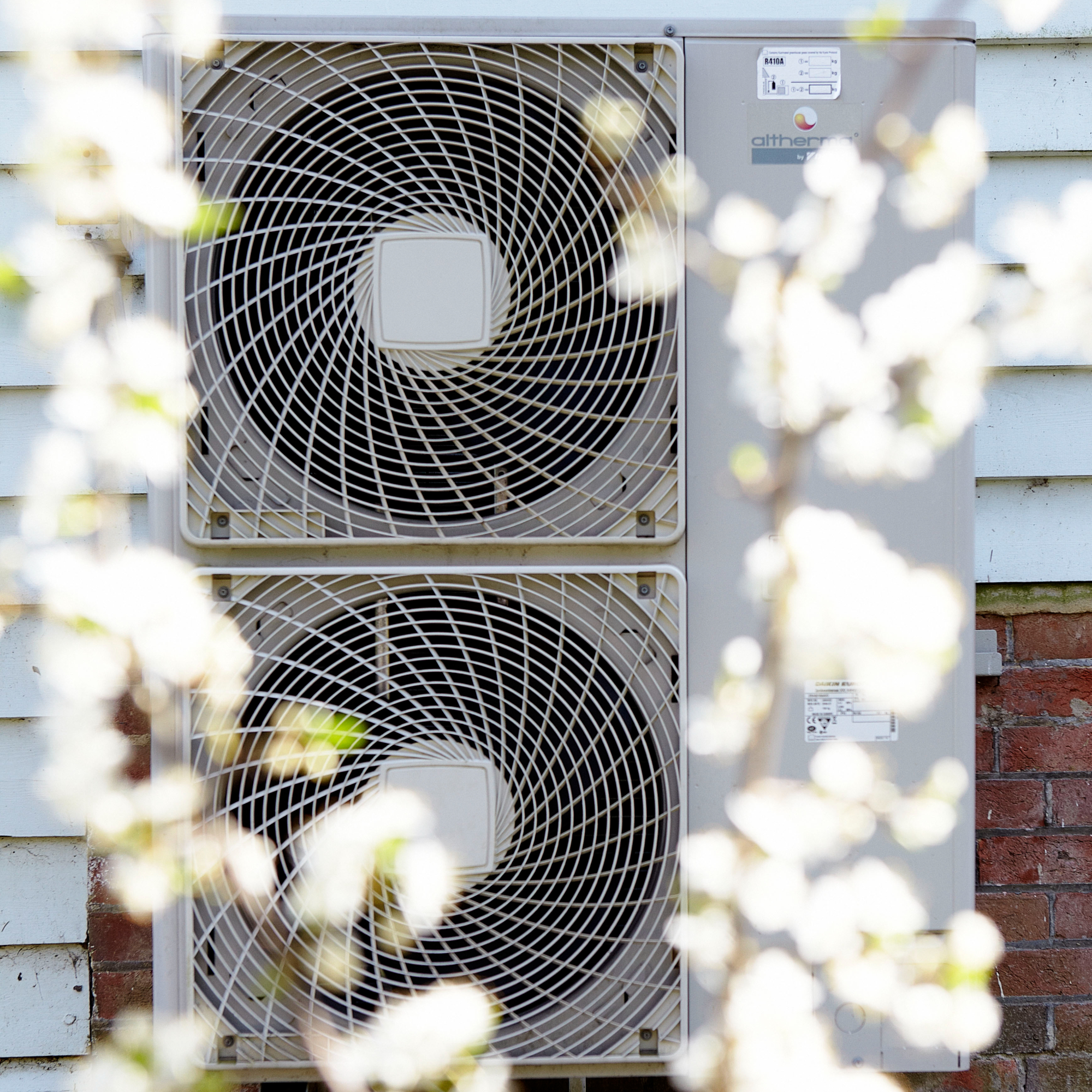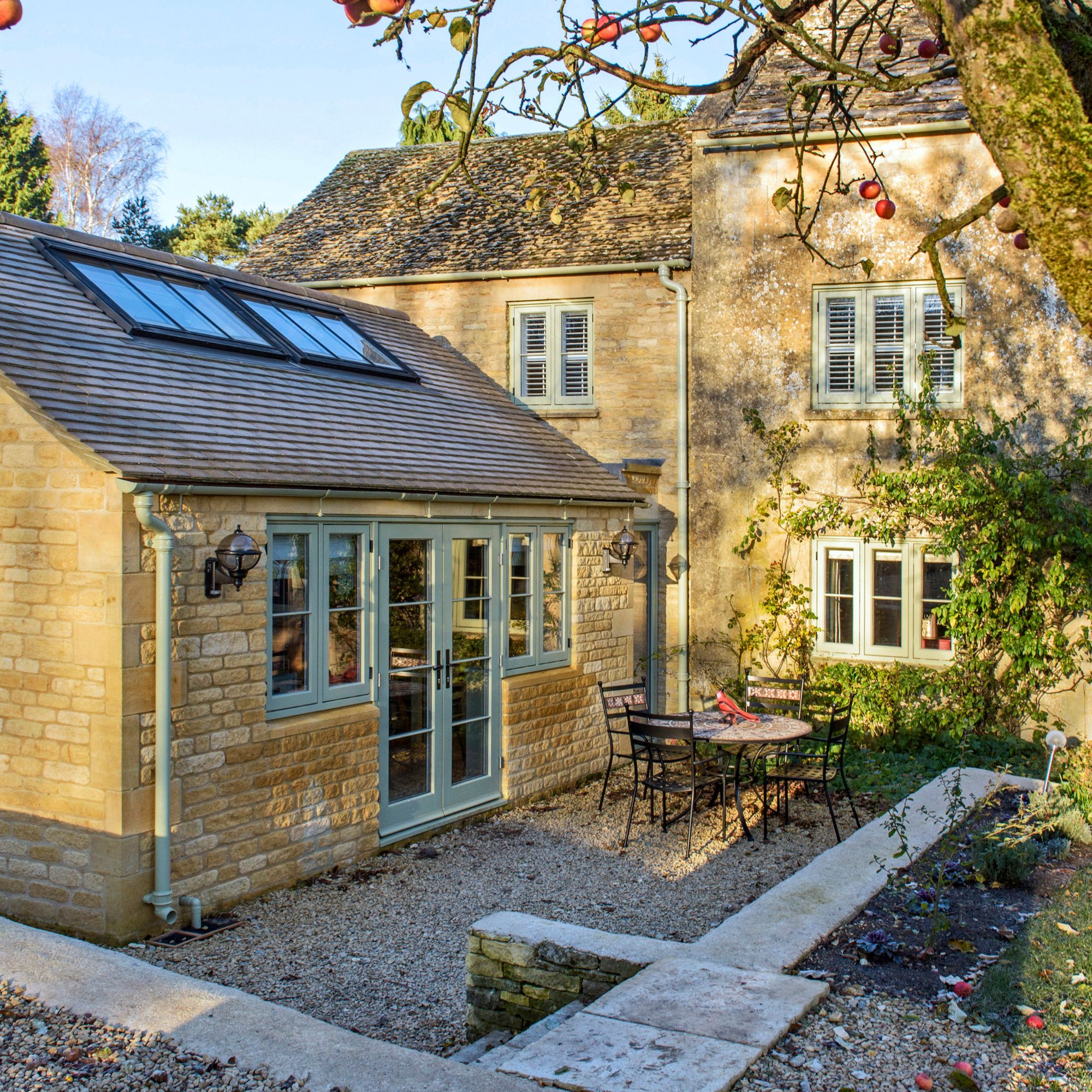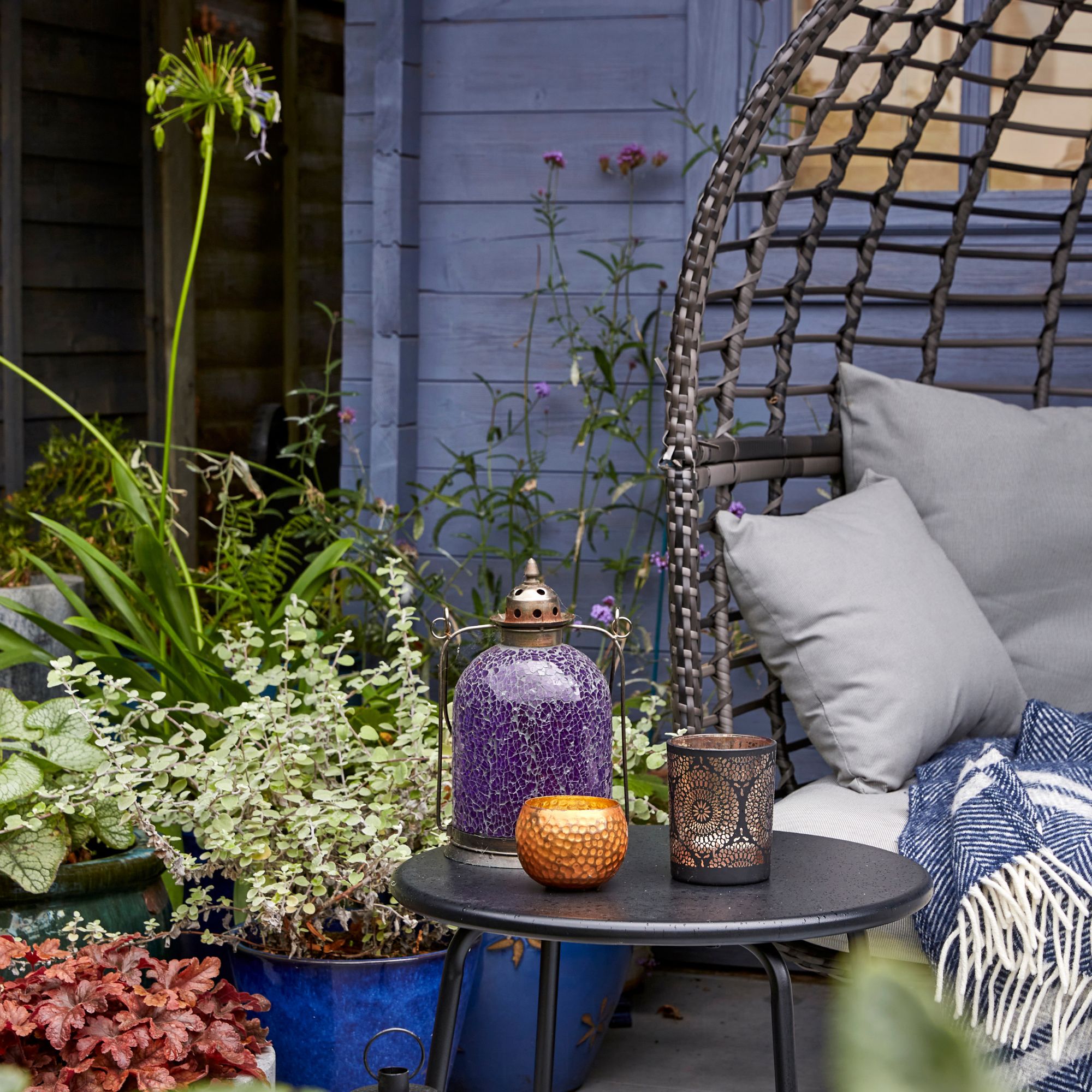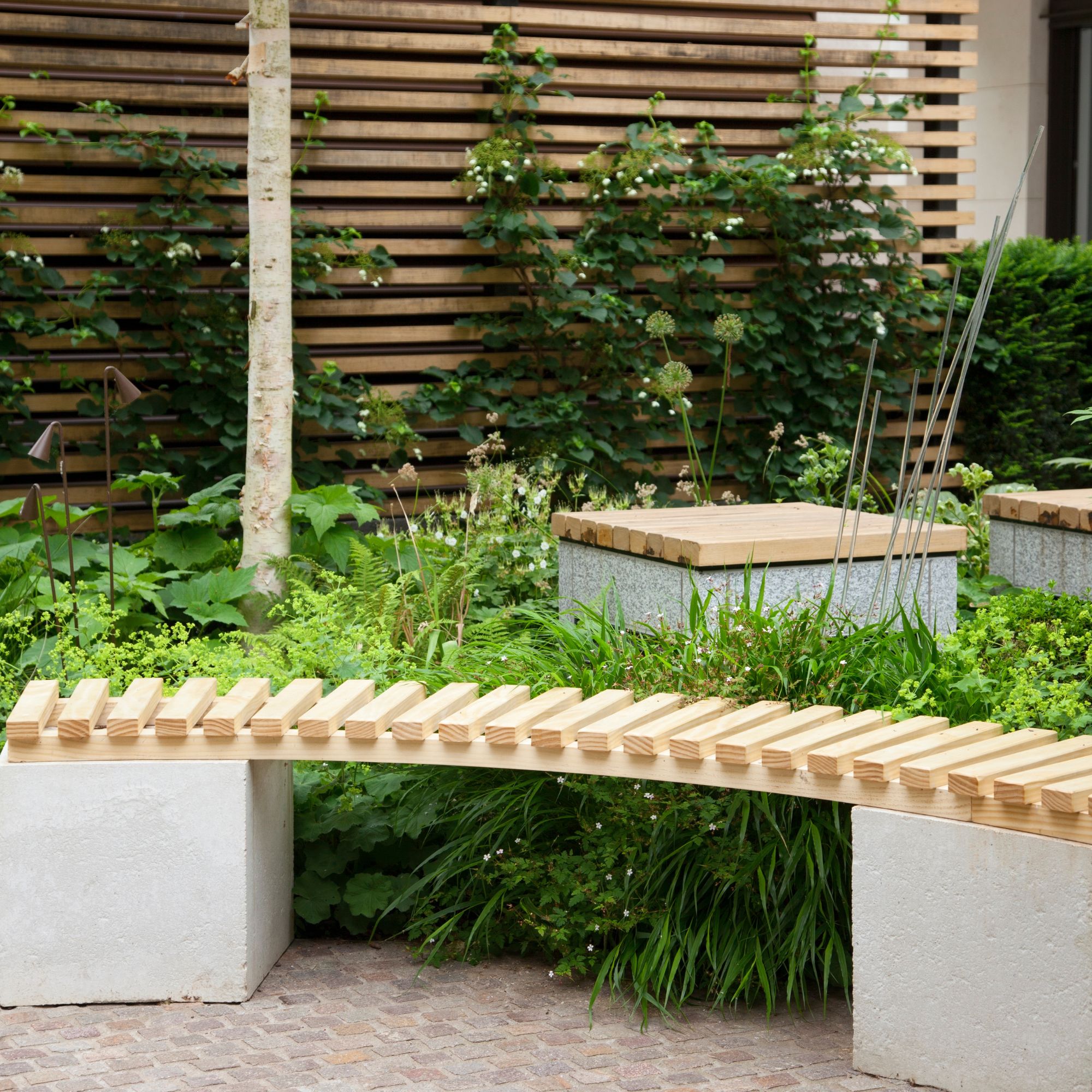
Heat pumps are becoming increasingly common, with more and more homeowners choosing this eco-friendly, efficient heating system. But one thing that puts many people off is the look and size of the exterior pump, which is where knowing how to hide a heat pump can come in handy.
Although heat pumps are three to four times more efficient than a traditional boiler, they have disadvantages which can make you question whether a heat pump is worth it. However, many of these downsides can be rectified with a little compromise or creativity on your part. And while heat pumps can be hidden, they need to be hidden in a way that doesn’t affect their efficiency or lessen their function.
As Adam Raw, co-founder of dwellow explains, ‘It’s imperative you maintain adequate air intake around your heat pump as blocking ventilation will make it work harder and less efficiently.’ This is how to hide a heat pump… safely.
1. Build a bespoke frame

If you love to stretch your DIY fingers and don’t mind a bit of hard graft, building a bespoke frame is one of the best ways to hide a heat pump. This way, you can choose the materials, size, and style of the frame.
Adam says, ‘You can create bespoke wooden slatted housing for your pump to match your home’s exterior. Some off-the-shelf screening can be bought, but you will probably be able to get a better fit or style if you create something bespoke.’
And while you can largely go with the flow when it comes to building the frame, it’s important to work with your heat pump rather than against it during this building process. After all, you need to build a frame that still allows your heat pump to be serviced.
‘Just be sure to make sure there’s plenty of room for air to circulate/escape, as otherwise you risk lowering the efficiency of your unit or even malfunctioning,’ Adam also adds. ‘However, make sure you always follow the manufacturer’s guidelines.’
This frame is perfect if you don't want the hassle of building your own. You just need to make sure that you choose the right size for your heat pump.
2. Disguise with plants and shrubbery

You probably already know that there are many fast-growing plants for privacy on your patio and trees to block out your neighbours, but one thing you might not realise is that you can also use this foliage to hide your heat pump.
Stuart Middleton, consumer energy expert at So Energy explains, ‘To conceal a heat pump without compromising its functionality, consider surrounding it with shrubs or hedges to blend it into your garden.’
Of course, the planting world is your oyster for this disguise, and you can choose to plant anything you like. But Adam has suggested some plants that should fit the bill.
‘If you have a sizeable area to work with, you could plan a lovely deep border to disguise the whole thing with evergreen shrubs such as Sarcoccoca, Bay, or Lavender, along with perennials such as Gaura Whirling Butterflies or Phlox Blue Paradise for some summer interest,’ he says.
However, he suggests choosing plants better suited for colder, drier conditions (such as alpine plants), as the fans and refrigerant within the heat pump may affect the surrounding area.
If you choose this option to disguise your heat pump, though, you must maintain these plants. The leaves and branches must be kept away from the essential components of the exterior pump, so always make sure they’re at least three feet away.
This mixed collection of alpine plants can be used to hide your heat pump and add a pop of colour and vibrancy to your outdoor area.
3. Hide with decorative panels

Head to any DIY shop, garden centre, or homeware store, and you’ll be greeted with a whole host of decorative panels. And while they’re typically used to hide ugly fences or divide gardens into sections, they can also be used to hide a heat pump eyesore.
Adam says, ‘Similar to the trend for hiding unsightly wheelie bins, install a decorative fence, trellis or even a faux plant wall panel in front of the pump. If it’s freestanding it will allow for easy access, and you can create something which blends in with the general look of your garden. Reed or bamboo screens can look nice, but quality faux plants can also work well.’
One of the major perks of hiding a heat pump with decorative panels is that they’re not permanent. You can move them out of the way when servicing and maintaining the heat pump, and you don’t run the risk of getting anything stuck in the vents.
They can be expensive if you want a more luxurious decorative panel, but it’s also possible to find something more affordable if you shop around.
This lattice planter serves as both a screen and a planting space, merging the two ideas above into one handy product. It's perfect for hiding a heat pump.
4. Take advantage of manufacturer perks

Many people assume that heat pump manufacturers and sellers only deal with installing and maintaining the heating system. However, many manufacturers also offer perks, like vinyl wraps for heat pumps.
Hamid Salimi, residential property manager at Daikin UK, says, ‘ We can provide bespoke vinyl wraps (to match your brickwork, for example) to help the unit merge into the background completely.’
You can choose a wrap that blends seamlessly with the exterior of your home, so you don’t even realise it’s there. Or you have the chance to go wild.
Adam says, ‘Vinyl wraps come in a variety of designs – from subtle and stylish botanical, stonework or wood options, to something a bit more visible! You could even make a feature of it – after all, there’s no need to be embarrassed by your heat pump. If using vinyl, make sure you don’t cover any air vents.’
FAQs
Can you put a fence around a heat pump?
Yes, you can put a fence around a heat pump, but you must also ensure you follow the manufacturer’s guidelines and safety requirements when doing so.
As a heat pump needs space around it to breathe and work efficiently, you should only put a fence around the heat pump if you keep it at least three-feet away from the pump itself.
If you can, it’s also better to opt for a decorative fence with holes or gaps in it rather than a traditional garden fence. This allows for proper ventilation.
Lastly, aim to leave at least one side of the heat pump exposed (without a fence around it) so it’s accessible for cleaning and servicing.
Are heat pumps noisy for neighbours?
Heat pumps aren’t silent, but they shouldn’t be a nuisance for your neighbours. Manufacturers stick to the rule that a heat pump should be no louder than 42 decibels at a 1m distance - which is around the same noise level as a fridge.
Because of this, it may sound like white noise when you get close to it. But legally, a heat pump cannot be noisy for your neighbours.







